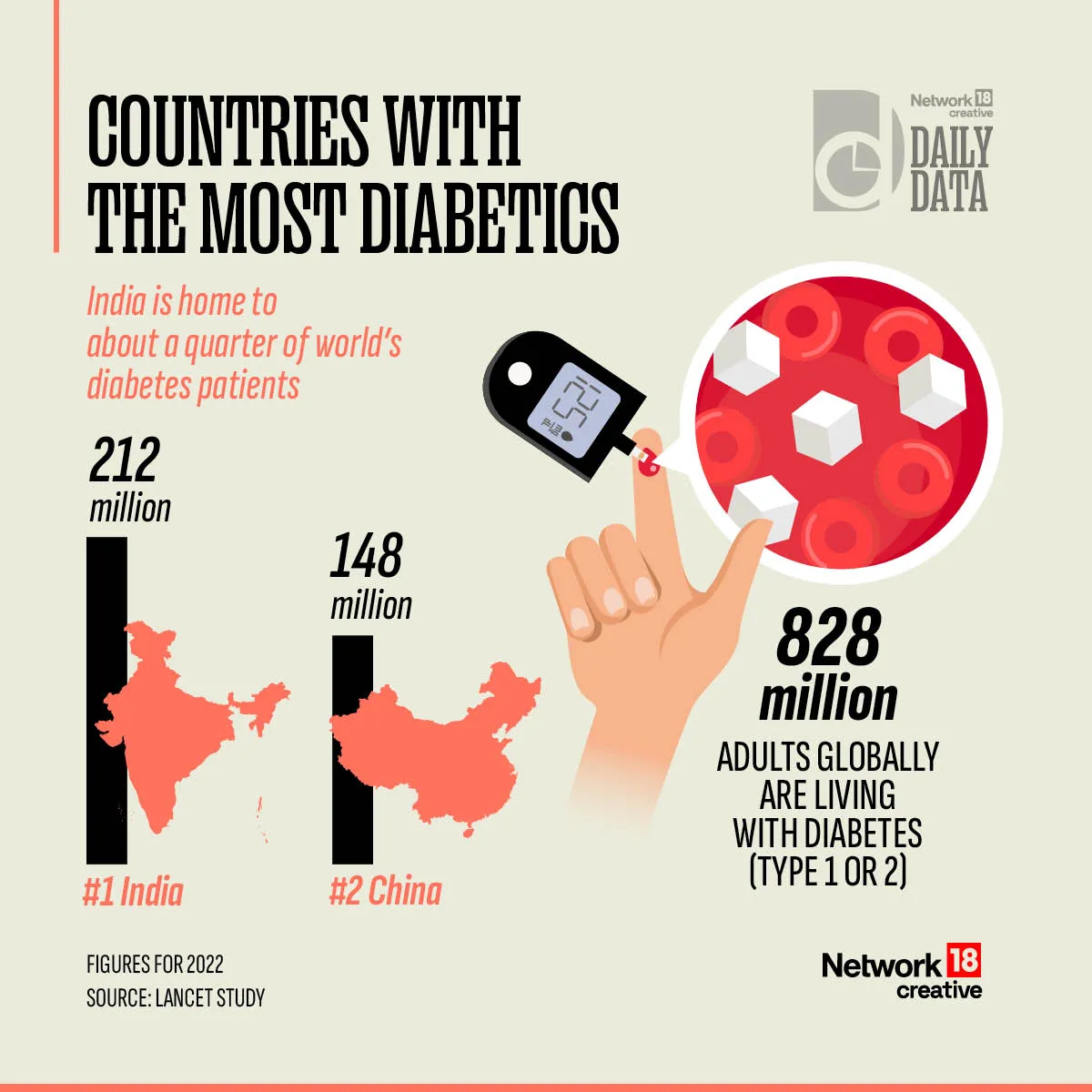The results demonstrate the growing global inequalities, with stagnant treatment rates in many low and medium income countries where the number of adults with diabetes is drastically increasing
The total number of adults living with type 1 or type 2 diabetes in the world has exceeded 800 million, more than four times the total number in 1990, according to a study that indicates that more than half (59%) of these people, aged 30, they did not receive treatment in 2022.
The analysis is published in the magazine 'The Lancet' coinciding with World Diabetes Day.Of the 828 million adults with diabetes in 2022, more than a quarter (212 million) lived in India and another 148 million in China, followed by the US.(42 million), Pakistan (36 million), Indonesia (25 million) and Brazil (22 million).
The study could not separate type 1 diabetes and type 2 in adults.However, previous evidence suggests that the vast majority of cases are of type 2, points out a statement from the magazine.
Majid Ezzati, of the Imperial College of London, indicates that the results demonstrate the growing global inequalities, with stagnant treatment rates in many low and medium income countries where the number of adults with diabetes is increasing drastically.
"This is especially worrying, since people with diabetes tend to be younger in low -income countries and, in the absence of effective treatment, run the risk of life complications, including amputation, heart disease, damagerenal or loss of vision, or in some cases, premature death. "
An important factor in the increase in type 2 diabetes rates and their variation between countries is obesity and poor diet.
The work was carried out by the 'NCD Risk Factor Collaboration' scientists, in collaboration with the World Health Organization.Data from more than 140 million people were used 18 years or older, about 1,000 studies -the treatment was analyzed with adult or more adult data;In addition, statistical tools were used.
From 1990 to 2022, world diabetes rates doubled both men (from 6.8% in 1990 to 14.3% in 2022) and in women (from 6.9% to 13.9%).If this adds the impact of the growth and aging of the population, it is equivalent to an estimate of 828 million, an increase of approximately 630 million people compared to 1990, when about 198 million adults had the disease.
The greatest increases occurred mainly in low and medium income countries (for example, the diabetes rate among women in Pakistan increased from 9% in 1990 to 30.9% in 2022, the greatest increase among all countries).
In higher income countries, such as Japan, Canada and some countries in Western Europe (such as France, Spain and Denmark), no changes, or even a small decrease in the last three decades were observed.
Countries with the lowest rates in 2022 were in Western Europe and Eastern Africa for both sexes, and in Japan and Canada for women.
As an example, these rates that year were as low as 2-4% for women in France, Denmark, Spain, Switzerland and Sweden, and 3-5% for men in Denmark, France, Uganda, Kenya, Malawi, Malawi, Malawi,Spain and Rwanda, according to Lancet.
No medication
Three out of five of the adults of 30 years or more with diabetes (445 million) did not receive medication in 2022, three and a half times the 1990 figure.
Since that decade, some countries, including many from central and western Europe, Latin America and Eastern Asia and El Pacíf55% received medication in 2022.
The highest treatment rates were estimated in Belgium (86% for women, 77% for men).In Spain, 72% for women and 68% for men.


